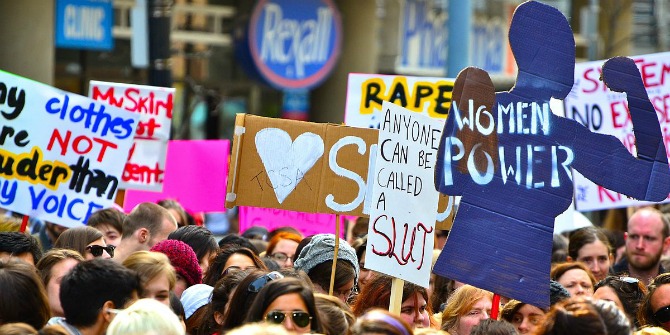Since the emergence of third-wave feminism in the ’90’s, feminist theory has become increasingly diversified into new categories, such as black feminism, liberal feminism, and radical feminism. But as different varieties of feminism emerge and intersect with other social issues such as race, sexuality, and class, the blanket term “feminism” has become increasingly obsolete. This is largely due to the fact that, from its inception, feminism has mainly addressed gender inequality as it pertains to white, cisgendered females. Now frequently distinguished as “white feminism,” this older, more homogenized version of feminism faces increased scrutiny. Criticism of the movement, however, is necessary to increase its strength. While it may appear to divide or detract from the overall movement, criticism spawns diversification, which makes feminism accessible to a larger audience.
As a white, cisgendered female, it is difficult to avoid falling into the white feminist trap; simply put, my experience as a woman cannot be equated to the experience of a person of colour or a member of the LGBT community. Just as any male can’t pretend that one dollar of his income is equal to my 77 cents, I can’t pretend that my 77 cents is the same as a black woman’s 64 cents, or a Hispanic woman’s 56 cents. Trying to fit every woman’s experience into one coherent idea of feminism is as illogical and incomplete as allowing one stereotype to represent an entire racial minority.
This type of generalization is exactly what white feminism is criticized for, and rightly so—a movement simply cannot enact change if the individuals it’s supposed to be uplifting feel alienated and excluded from it. With that said, this feeling of alienation white feminism produces doesn’t just apply to non-white women, but to all members of society. With each wave of feminism, there has been a pushback by both men and women who actively identify themselves as non-feminists—the most popular and recent being the “Women Against Feminism” collective. Feminists will often attribute this opposition to a misunderstanding of feminism’s fundamental purpose, or a belief that feminism advocates for something other than political, social, and economic equality of the sexes. Feminists distance themselves from these associations because they feel that such beliefs do not accurately, or even remotely, reflect their motivations.
Another frequent criticism of feminism is that it excludes members of the LGBT community from the conversation. Feminism must address this concern and emphasize inclusivity by increasing focus on the intersectionality. The way in which feminism intersects with issues of race, sexuality, and class ultimately demonstrates that feminism isn’t just a women’s issue, but a human rights issue. While feminism at its core is, and should be, a movement to promote gender equality, conceptualizing feminism as it pertains to other social issues makes it more accessible.
White feminism needs to acknowledge the ways in which it excludes many of the women it is supposed to support. Feminism should embrace its diversity, as its growing ability to reach and influence more people will make it stronger. For this diversity to flourish properly, however, feminism needs to be able to reflect upon itself as a social movement, and be critical of certain brands that invalidate others and counteract progress. Gender equality will be very difficult to achieve if feminism continues to work against, rather than with, itself.









